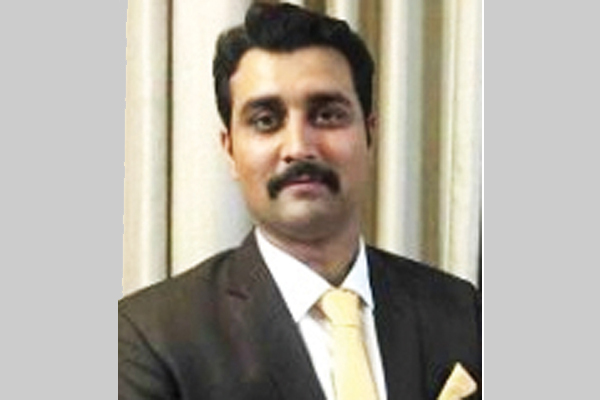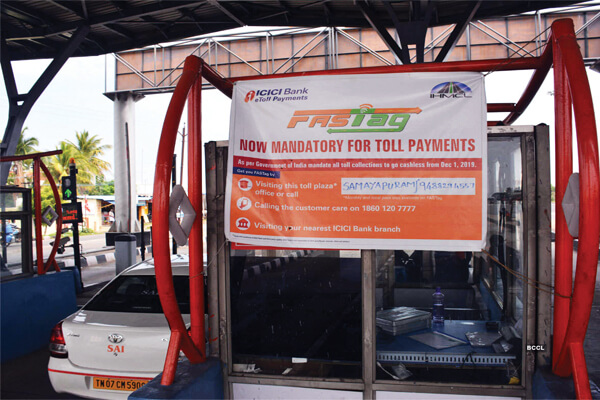
Karnataka has been always taking the lead role in innovation and bringing in the best models to work in various areas. I believe that Karnataka has taken a lead in urban mobility by developing the best fleet of public transport. Also, the introduction of BRTS in the Hubbali Dharwad is a big step, says Ramandeep Chowdhary, Deputy Secretary, Ministry of Road Transport and Highways (MoRTH), in conversation with Nisha Samant of Elets News Network (ENN).
As the Deputy Secretary of Ministry of Road Transport and Highways (MoRTH), what are the key areas that you are focusing on?
As the Deputy Secretary (Highways) MoRTH, my prime role revolves around major policy and planning affairs of the National Highways Authority of India (NHAI). Our Division largely coordinates inter-ministerial deliberations on the key NHAI initiatives and also acts as an interface to approve major policy reforms of NHAI. Apart from aligning the major concession documents of NHAI as per requirements, we also bring in changes in RFP documents of NHAI. We move the cabinet note for introducing new instruments in the NHAI. Recently, we got an approval from the Cabinet for the establishment of the first public sector Infrastructure Investment Trust (InvIT) for NHAI. Toll Operate Transfer is another model in which NHAI is increasingly looking to monetise its assets for undertaking further development of projects.

We also coordinate in the financial planning as well as collaborating with other lending agencies to fund highway development projects; arrange funding from multi-lateral agency such as World Bank, ADB to support the NHAI for the execution of the project.
What are the upcoming schemes in the pipeline for 2020?

As per the new infrastructural pipeline of the government announced recently, a target of Rs. 19.6 lakh crores has been set for the road sector in the next 5 years, and the role of NHAI in achieving that will be crucial.
As MoRTH is a project-oriented ministry, more and more projects under the Bharatmala Priyojna and also new Greenfield projects will be taken up for development as per the government’s priority. The work on Amritsar-Jamnagar new Greenfield road is on besides the ambitious new Greenfield Delhi-Mumbai corridor which is in advanced stages of development.
Apart from these works, projects under the Phase 1 of Bharatmala Pariyojana (34,800 km) are being taken up for development.
The ministry has also entered into an era of digital toll payments by introducing the Fast Tag, and has extensively and aggressively enforced ETC throughout India. This will bring in more transparency and user friendliness in toll operations along with reducing waiting time in the toll queues.
What are the major challenges faced by your ministry and what measures are being taken up to mitigate those?
One of the major challenges in highway development and expansion programme is the ever increasing cost of land acquisition for the Brownfield projects. In certain cases and geographies, this cost is becoming prohibitive and is adversely affecting project viability. In order to streamline this, the ministry is rationalising its land acquisition policy and has brought in many changes in terms of alignment choosing, geo tagging and use of technology and control mechanisms to lower its land acquisition costs. In certain cases, these land acquisition costs are being shared by the state governments concerned.
What are the citizen engagement activities MoRTH has taken up or plans to take up to create awareness about the road safety and environmental conservation?
MoRTH has been an active advocate of the road safety and has taken some key policy initiatives in this field. New Motor Vehicle (Amendment bill 2009) is one big step in this direction. Also many key awareness programmes, including National Road Safety Week, is conducted every year throughout the country to spread the message of road safety in a more concerted manner. We do deploy important personalities to spread the message. Last year, we made actor Akshay Kumar the brand ambassador for road safety and launched some awareness campaigns. We also engage with NonGovernment Organisations and use extensive social and electronic media to spread the awareness amongst masses for the road safety. MoRTH also encourages the youth and educational institutions to become champion of road safety as we believe that it is the most vulnerable section, and if targetted well they can bring in a lot of generational change in the approach towards road safety. For National Register for Driving Licence and National Register for Vehicle Registration, the government launched “Vahan” & “Sarathi” platforms to bring harmony in the registration and licensing process across the country. The Ministry of Road Transport and Highways has issued guidelines that should be followed by hospitals, police and all other authorities for the protection of good Samaritans who help road accident victims.
Also Read: KARNATAKA Where Cities are Engines of Growth
How has Karnataka fared in terms of sustainable urban mobility vis-a-vis the other states of India?
Karnataka has been always taking the lead role in innovation and bringing in the best models to work in various areas. I believe that Karnataka has taken a lead in urban mobility by developing the best fleet of public transport. Also, the introduction of BRTS in the Hubbali Dharwad is a big step. BMTC and KSRTC have left a mark in terms of introducing innovative ideas that other state road transport units should learn from. Karnataka has been a leader. Being an IT Hub the state has introduced the best of the IT initiatives within its transport sector and is widely appreciated for its ease of availability of public transport.
What is your advice to the policymakers of the state to create a better transport ecosystem in Karnataka?
In terms of increasing pressure on the roads in Bengaluru, the city is gearing up to upgrade its public transport system to shift the masses from individual vehicles to public and shared mobility through METRO and bus service amongst others. The users of E-vehicles should be encouraged more to reduce pollution within the city.
Also Read: Karnataka Moving towards Seamless Urban Mobility
Be a part of Elets Collaborative Initiatives. Join Us for Upcoming Events and explore business opportunities. Like us on Facebook , connect with us on LinkedIn and follow us on Twitter, Instagram.











